Acer Nitro VG240Y Pbiip review – a 144Hz monitor with FreeSync and deep OSD menu
 Now, the time has come for a gaming monitor to visit our office. It is the Acer Nitro VG0, and more specifically the VG240YPbiip. Essentially, it is a 1080p display with a 144Hz refresh rate and despite it lacks G-sync, it is Freesync-enabled – people with AMD GPUs will be happy.
Now, the time has come for a gaming monitor to visit our office. It is the Acer Nitro VG0, and more specifically the VG240YPbiip. Essentially, it is a 1080p display with a 144Hz refresh rate and despite it lacks G-sync, it is Freesync-enabled – people with AMD GPUs will be happy.
Now, the display, itself, isn’t especially aggressive in its gaming-design, but it is the stand that gives it away. As the name suggests, it has a 24-inch screen size, which combined with the resolution should be good enough in terms of sharpness for most gamers. Additionally, the 1080p resolution enables gamers with lower-tier hardware to enjoy high frame rates, thus perceiving the advantages of the fast refresh rate.
However, this is doesn’t tell the entire story. What is more important for gamers is actually the pixel response time, rather than the refresh rate, by itself. Because a fast panel with slow response times results in ghosting, which can be more annoying in faster screens and oftentimes you are better off buying a 60Hz with a decent response, than a fast monitor with a slow response.
Nevertheless, we are going to put it to test and tell you more about that in a minute.
You can check the current price of Acer Nitro VG240Y Pbiip here: Buy from Amazon.com (#CommissionsEarned)
Contents
Unboxing and set up
First, let’s start with the packaging. So, the device comes in a relatively unexciting box. Inside, you’ll find a huge styrofoam assembly, which holds the panel, as well as the stand, cables, and instructions.
Setting up the display is as simple as fitting the stand to the monitor and connecting it with the appropriate cables. By the way, inside the box, you’ll find only an HDMI connector, so if you need a DisplayPort cable, you’ll need to buy it separately.
Design and construction
Expectedly, the Nitro VG240Y has an all-plastic build. Design-wise it feels a little bulky on the back but overall – it is not obnoxious. Well, if it wasn’t for the stand, of course, which has two stretched legs and a red hint on the top. Actually, the display size is 23.8″ but for the purpose of ease, Acer has rounded it to 24″ in the naming scheme.
In terms of size, the device measures at 540x412x240mm (WxHxD) (including the stand), and weighs around 4.04 kg. We have to note that some models include integrated speakers (ours doesn’t), so the weight might vary. Additionally, the screen bezels on this thing are quite small – especially the side ones and the top. However, the bottom has quite a bit of “bulk” while still not being too much in your face.
Let’s pay some attention to the stand. Unlike Dell, which tend to make extremely adjustable stands for their mainstream (and Pro) monitors, the Nitro VG240Y, doesn’t offer much. You are only going to be able to tilt it. The mechanism goes to 20-degrees upwards and 5-degrees downwards. Ultimately, this means no height adjustment, swivel, nor pivot. While the pivot is rarely used in gaming, the swivel and height adjustment, especially, can be really helpful in some situations.
Additionally, the monitor has all of its ports on the back, while for controlling the OSD, you’ll have to use your right hand and access behind the display – an interesting solution – not the most comfortable out there. By the way, since we are at the back, there is a VESA mounting point surrounding the large V logo.
Ports
In terms of I/O, you have only two HDMI connectors and one DisplayPort. That’s it – no audio output, nor USB expansion.
OSD menu
The OSD can be started by pressing any of the four buttons. The bottom-most of them doubles as a knob and will play an essential part in navigating through the menu. Right out the bat, you’ll see three quick menus and one option that will lead you to the General OSD tab.
Inside the latter, you’ll see submenus that will give you control over the Picture, Color, Audio (if available), Gaming settings, OSD customization, and System properties. Actually, it will be under the Gaming tab, where you’ll find the Overdrive settings (for ghosting reduction, as well as the FreeSync switch and VRB – Acer’s Visual Response Boost. Essentially, this is backlight strobing – reducing the time a pixel is visible, thus reducing blur. As a side effect, you get a lowered brightness, as this works similarly to PWM.
Display quality
Acer Nitro VG240Y Pbiip (23.8) is equipped with a 144Hz Full HD panel. Its diagonal is 23.8″ (60.5 cm), and the resolution 1920 x 1080 pixels. It also supports AMD’s FreeSync Technology. The screen ratio is 16:9, and we are looking at a pixel density of – 93 ppi, and a pitch of 0.27 х 0.27 mm. The screen turns into Retina when viewed at distance equal to or greater than 94cm (31.5″) (from this distance one’s eye stops differentiating the separate pixels).

It has comfortable viewing angles. We offer images at 45° to evaluate image quality.

As we mentioned the OSD menu gives you a choice from “User”, “Standard”, “Movie”, “Game”, “ECO”, as well as three dedicated Gaming options – G1, G2, and G3.
The following evaluations are made for the Standard mode.

We measured a maximum brightness of 295 nits in the middle of the screen and 295 nits as an average for the whole area, with a maximum deviation of 14%.
In the illustration below you can see how the display performs from a uniformity perspective. The illustration below shows how matters are for operational brightness levels (approximately 140 nits) – in this particular case at 25% Brightness (White level = 146 cd/m2, Black level = 0.1 cd/m2).
Values of dE2000 over 4.0 should not occur, and this parameter is one of the first you should check if you intend to use the monitor for color-sensitive work. The contrast ratio is good – 1480:1 (1390:1 after profiling).
To make sure we are on the same page, we would like to give you a little introduction to the sRGB color gamut and the Adobe RGB. To start, there’s the CIE 1976 Uniform Chromaticity Diagram that represents the visible specter of colors by the human eye, giving you a better perception of the color gamut coverage and the color accuracy.
Inside the black triangle, you will see the standard color gamut (sRGB) that is being used by millions of people in HDTV and on the web. As for the Adobe RGB, this is used in professional cameras, monitors, etc for printing. Basically, colors inside the black triangle are used by everyone and this is the essential part of the color quality and color accuracy of a mainstream display.
Still, we’ve included other color spaces like the famous DCI-P3 standard used by movie studios, as well as the digital UHD Rec.2020 standard. Rec.2020, however, is still a thing of the future and it’s difficult for today’s displays to cover that well. We’ve also included the so-called Michael Pointer gamut, or Pointer’s gamut, which represents the colors that naturally occur around us every day.
The yellow dotted line shows Acer Nitro VG240Y Pbiip’s color gamut coverage.
Its display covers 99% of the sRGB/ITU-R BT.709 (web/HDTV standard) in CIE1976 (it is able to represent almost all of the colors found on the Web).
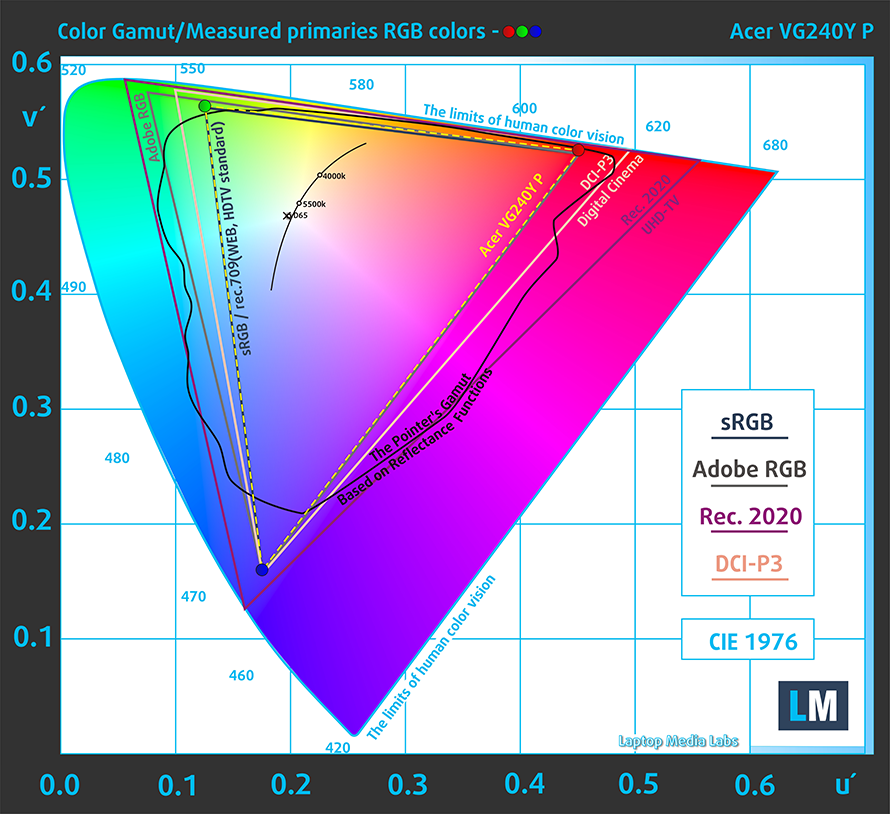
Our “Design and Gaming” profile delivers optimal color temperature (6500K) at 140 cd/m2 luminance and sRGB gamma mode. We’ve used the “Standard” preset after factory reset and brightness set to 25%.
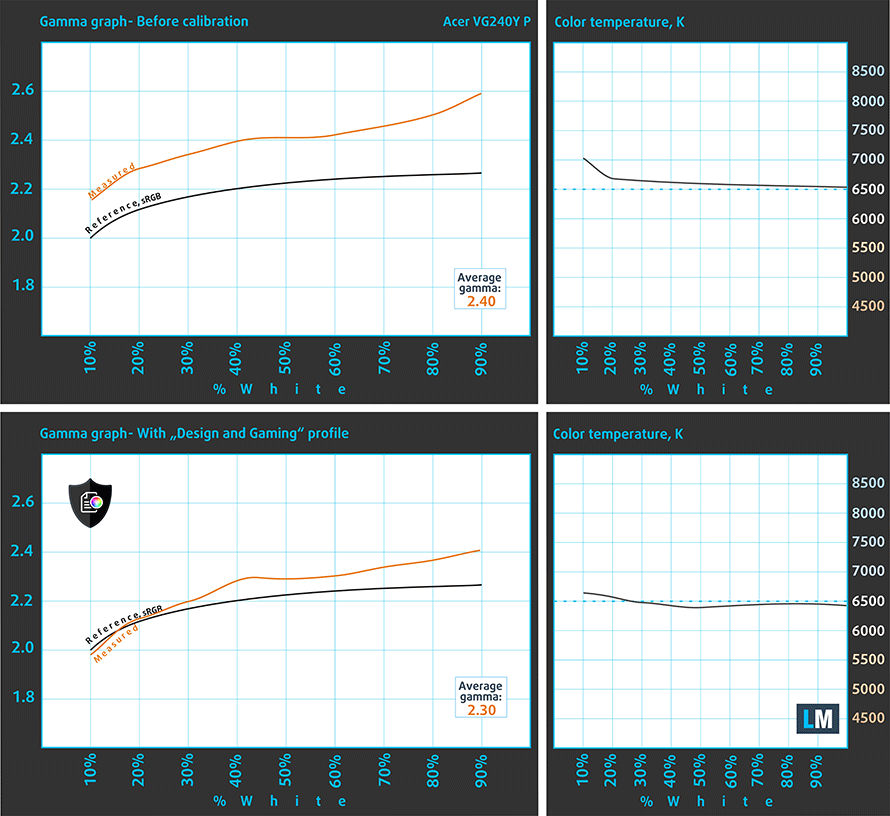
We tested the accuracy of the display with 24 commonly used colors like light and dark human skin, blue sky, green grass, orange, etc. You can check out the results at factory condition and also, with the “Design and Gaming” profile.
Below you can compare the scores of Acer Nitro VG240Y Pbiip with the default settings (left), and with the “Gaming and Web design” profile (right).
The next figure shows how well the display is able to reproduce really dark parts of an image, which is essential when watching movies or playing games in low ambient light.
The left side of the image represents the display with stock settings, while the right one is with the “Gaming and Web Design” profile activated. On the horizontal axis, you will find the grayscale and on the vertical axis – the luminance of the display. On the two graphs below you can easily check for yourself how your display handles the darkest nuances but keep in mind that this also depends on the settings of your current display, the calibration, the viewing angle, and the surrounding light conditions.
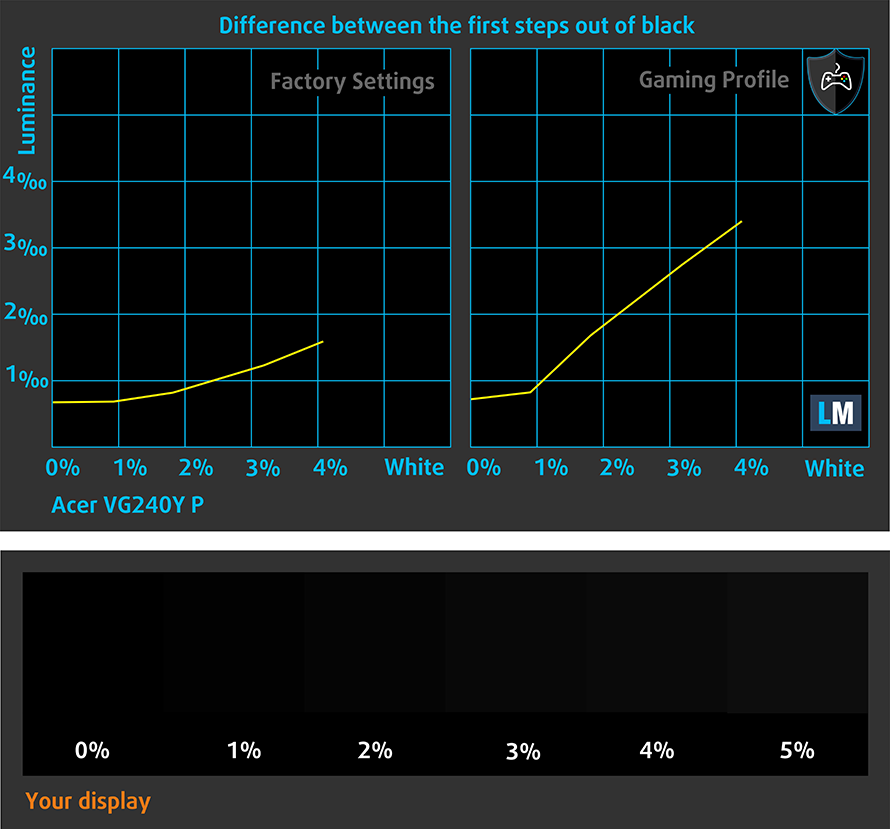
Response time (Gaming capabilities)
The response time of the pixels shouldn’t be slower than the refresh cycle of the screen (16.67 ms for 60Hz, 6.94 ms for 144Hz and so on). Ultimately, this results in ghosting, caused by the pixel’s inability to change in that amount of time, thus continuing in the next frame. In order to battle with that issue, manufacturers use Overdrive. Essentially, this is a technique for RTC (Response Time Compensation). What does it do? Well, it supplies higher voltage to the crystals (in LCD monitors), which makes them switch their position faster. However, excessive levels of Overdrive can result in Overshooting, which transforms into inverse ghosting, coronas and artifacts, obviously affecting the image quality in a negative way. This is why many manufacturers provide several levels of Overdrive, so you can choose which suits you best.
We test the reaction time of the pixels with the usual “Gray-to-Gray” method from 50% White to 80% White and vice versa between 10% and 90% of the amplitude.
You can see the results in “Extreme” and “Normal” Overdrive modes, measured twice – at 60Hz and at 144Hz.
PWM (Screen flickering)
Pulse-width modulation (PWM) is an easy way to control monitor brightness. When you lower the brightness, the light intensity of the backlight is not lowered, but instead turned off and on by the electronics with a frequency indistinguishable to the human eye. In these light impulses, the light/no-light time ratio varies, while brightness remains unchanged, which is harmful to your eyes. You can read more about that in our dedicated article on PWM.
Acer Nitro VG240Y Pbiip’s backlight is not PW-modulated at any brightness level. This makes it comfortable for your eyes in this aspect even during long working periods.

Blue light emissions
Installing our Health-Guard profile not only eliminates PWM but also reduces the harmful Blue Light emissions while keeping the colors of the screen perceptually accurate. If you’re not familiar with the Blue light, the TL;DR version is – emissions that negatively affect your eyes, skin and your whole body. You can find more information about that in our dedicated article on Blue Light.
Buy our profiles
Since our profiles are tailored for each individual display model, this article and its respective profile package are meant for the Acer Nitro VG240Y Pbiip.
*Should you have problems with downloading the purchased file, try using a different browser to open the link you’ll receive via e-mail. If the download target is a .php file instead of an archive, change the file extension to .zip or contact us at [email protected].
Read more about the profiles HERE.
In addition to receiving efficient and health-friendly profiles, by buying LaptopMedia's products you also support the development of our labs, where we test devices in order to produce the most objective reviews possible.

Office Work
Office Work should be used mostly by users who spend most of the time looking at pieces of text, tables or just surfing. This profile aims to deliver better distinctness and clarity by keeping a flat gamma curve (2.20), native color temperature and perceptually accurate colors.

Design and Gaming
This profile is aimed at designers who work with colors professionally, and for games and movies as well. Design and Gaming takes display panels to their limits, making them as accurate as possible in the sRGB IEC61966-2-1 standard for Web and HDTV, at white point D65.

Health-Guard
Health-Guard eliminates the harmful Pulse-Width Modulation (PWM) and reduces the negative Blue Light which affects our eyes and body. Since it’s custom tailored for every panel, it manages to keep the colors perceptually accurate. Health-Guard simulates paper so the pressure on the eyes is greatly reduced.
Get all 3 profiles with 33% discount
Verdict
Well, in terms of display quality, there is a lot the Nitro VG240Y provides – a 144Hz refresh rate, Full HD resolution, comfortable viewing angles, great contrast ratio, and adequate default settings. Moreover, it doesn’t use PWM, which makes it comfortable for long gaming (or working) sessions, and provides quite a lot of customization in the OSD menu. It covers 99% of sRGB – essentially all of the colors found on the internet.
Its color accuracy in Standard mode is decent, and when our Gaming and Web design profile is present, the results become within the Web standards. While the response time of the display isn’t very quick – 15 ms, you can use the Overdrive mode in the menu, as it reduces it down to around 6 ms. However, expect overshooting and some inverse ghosting. Interestingly enough, in the “Normal” strength of Overdrive, we see similar results to when it is turned off, so basically it only works at the “Extreme” level.
In terms of usability, the monitor doesn’t offer anything special. Its stand is well-balanced, but it lacks movements such as swivel, pivot and height adjustment, which is perhaps the biggest drawback. Additionally, although, you have two HDMI connectors and one DisplayPort, there is no USB expansion, nor Audio output. By the way, keep in mind our model lacks integrated speakers – some iterations have them.
So, basically, if you are a gamer you might well enjoy this device. It is definitely great to work on a fast refresh rate panel, as the image looks extremely smooth. Not on the last place – the bond between this panel and AMD is strengthened by the FreeSync support, so this would certainly be an advantage if you own a card from the Red company. Also, it is worth saying that it currently costs around $200, which is a great deal for a 144Hz display!
You can check the current price of Acer Nitro VG240Y Pbiip here: Buy from Amazon.com (#CommissionsEarned)
Pros
- 144Hz refresh rate
- Adequate default settings
- Well populated OSD menu
- Complete sRGB color gamut coverage and standard-matching dE values
- Wide viewing angles, good contrast ratio, and FreeSync support
Cons
- Lacks USB expansion
- Stand feels static
- Response time is a little slow (fixed from the OSD menu)
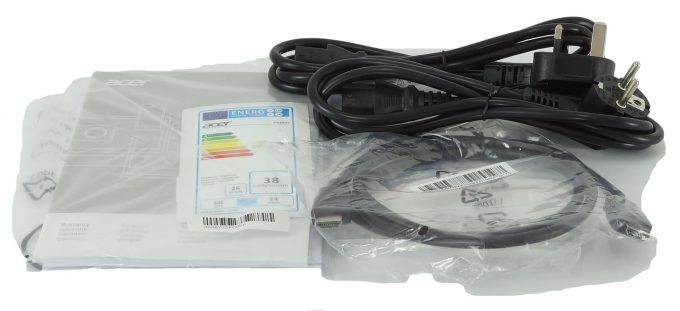
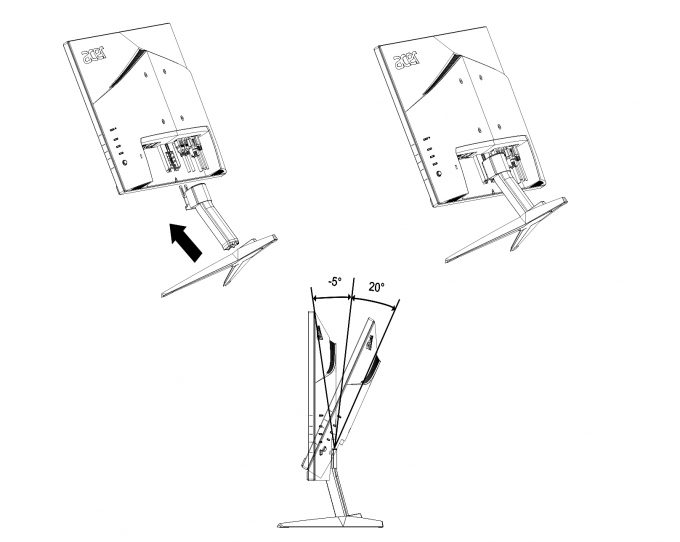
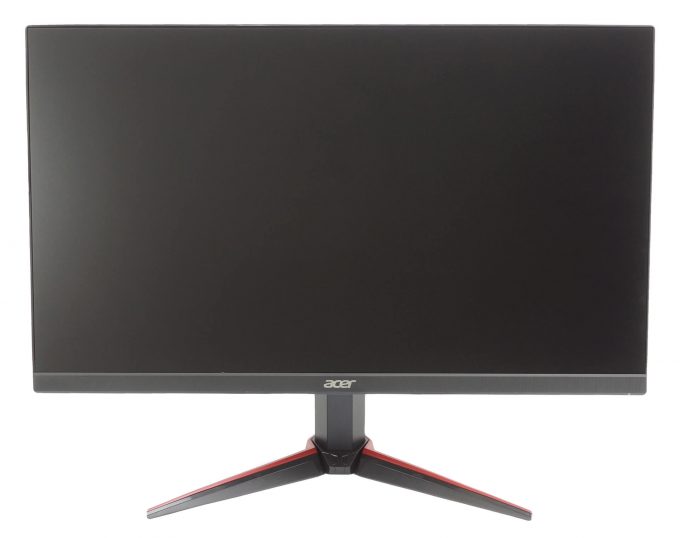
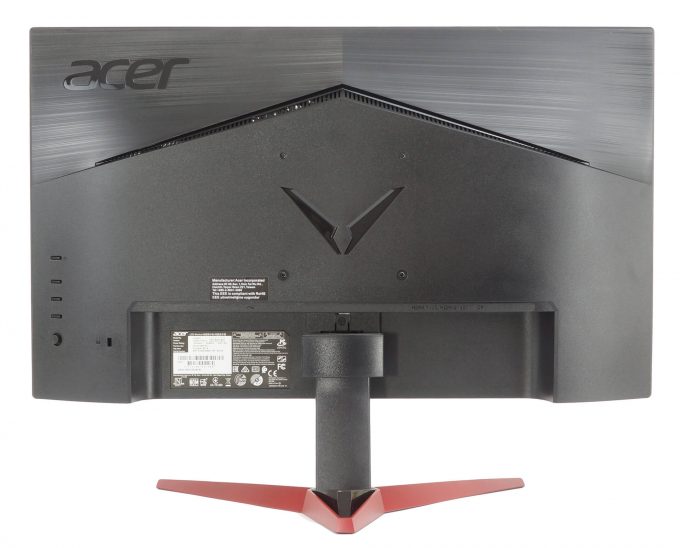
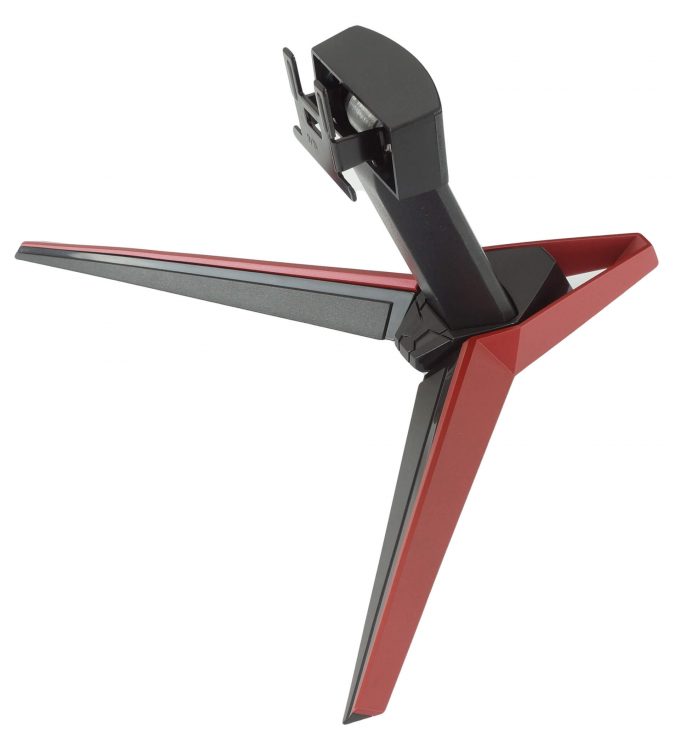

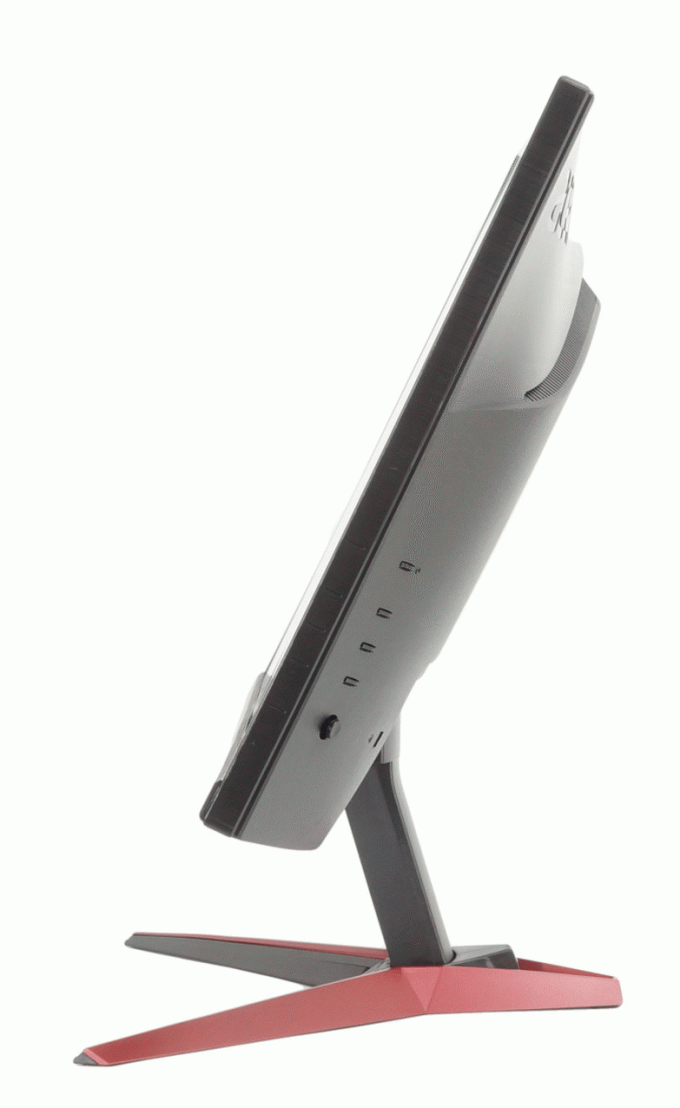
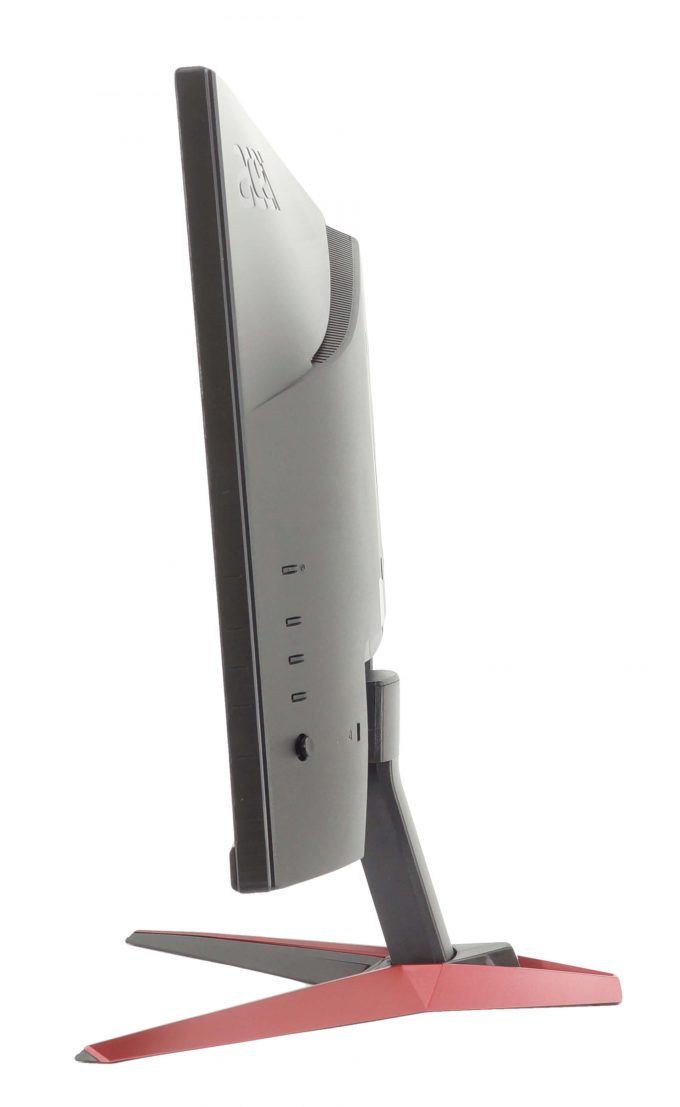
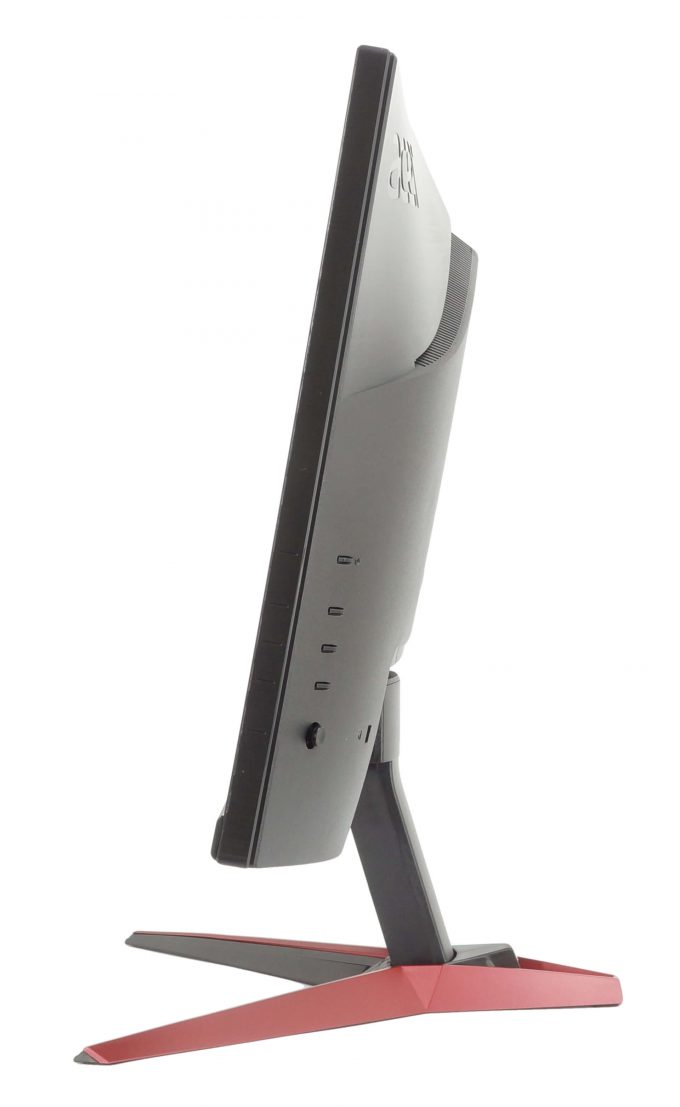
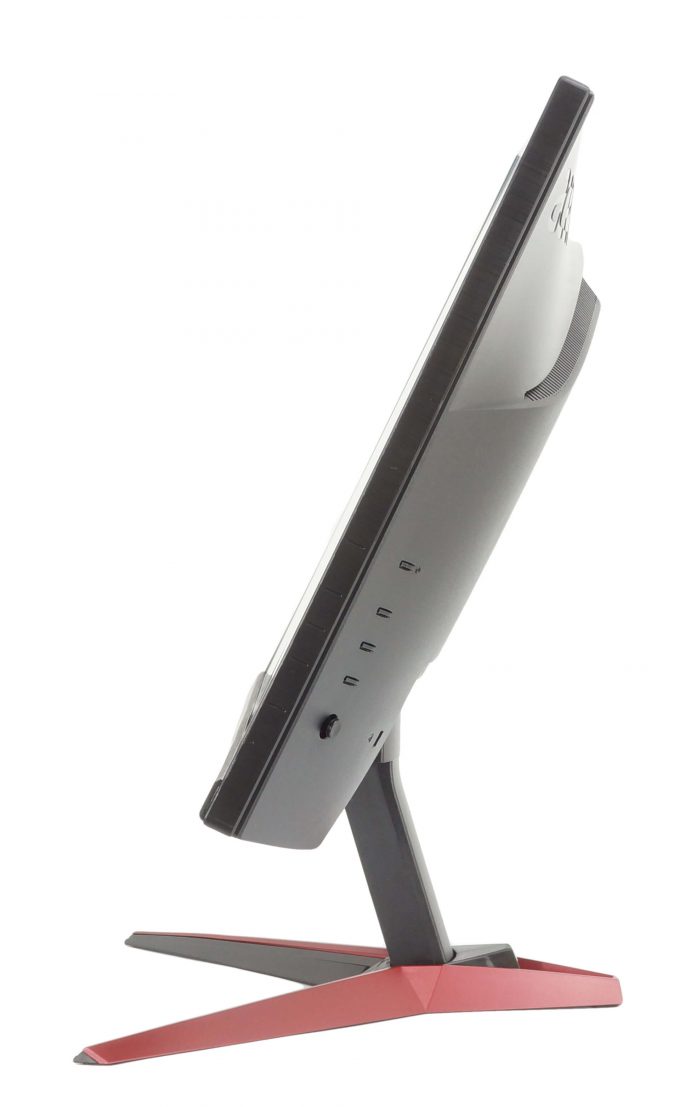

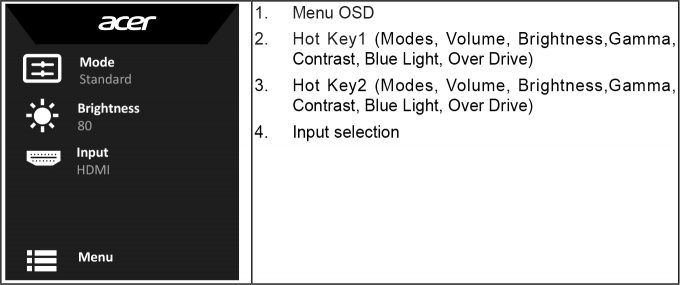
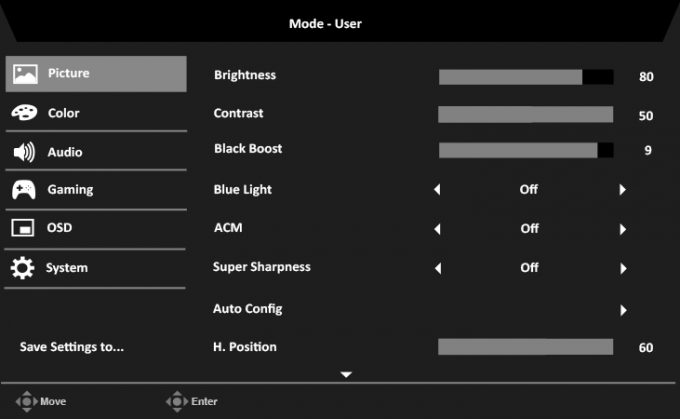
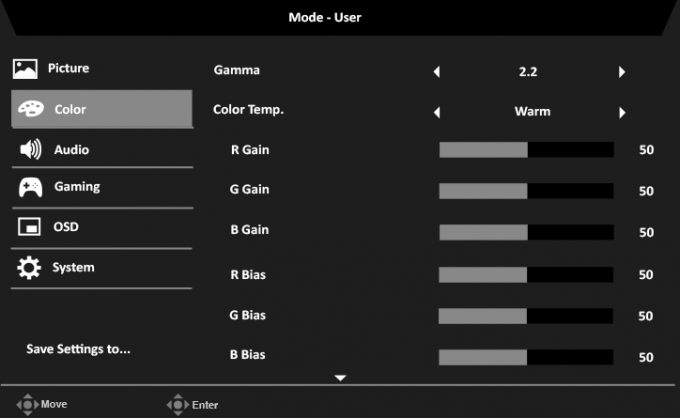


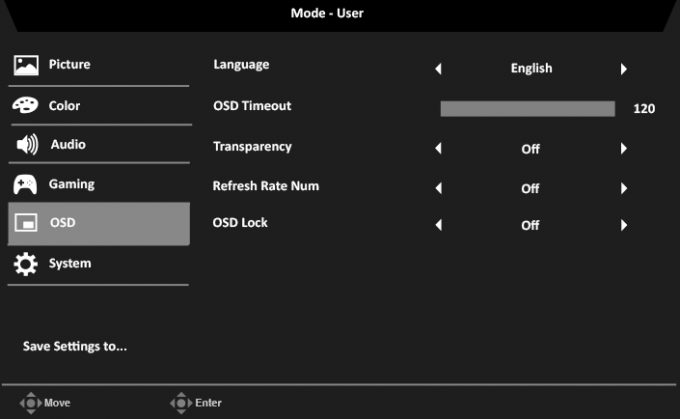
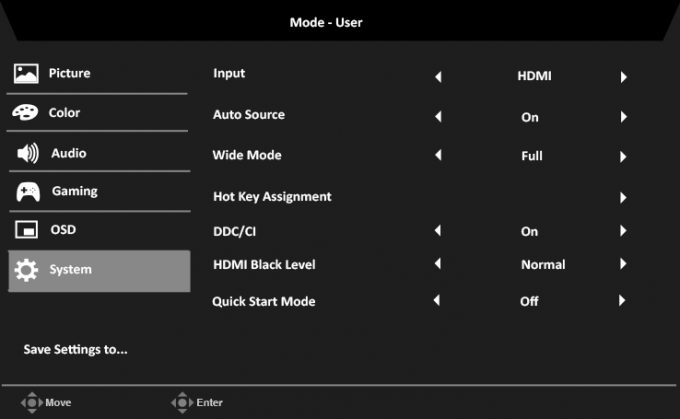
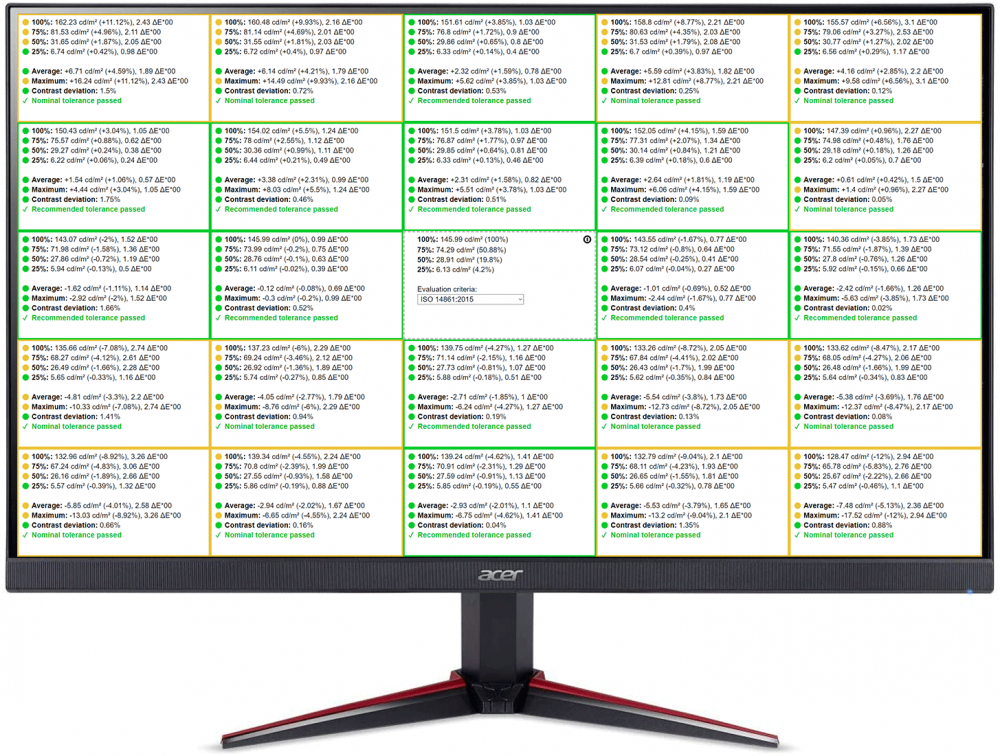
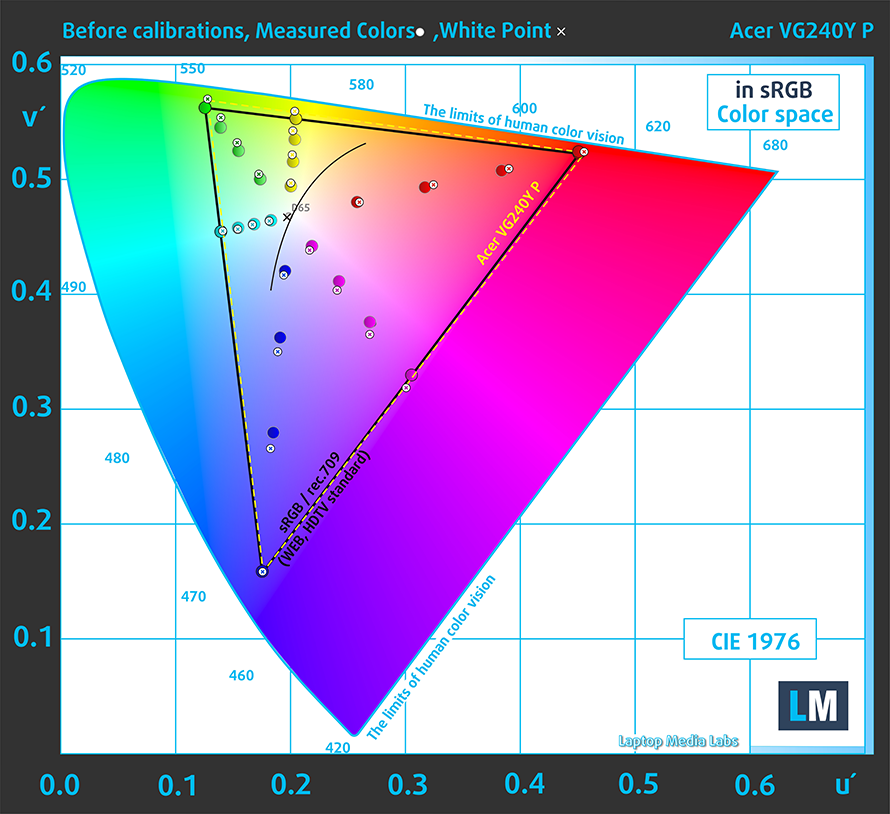




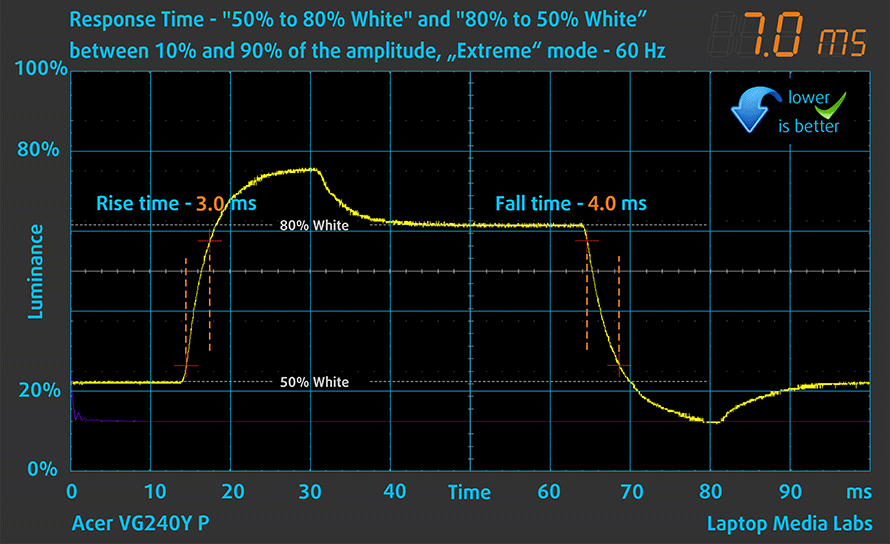
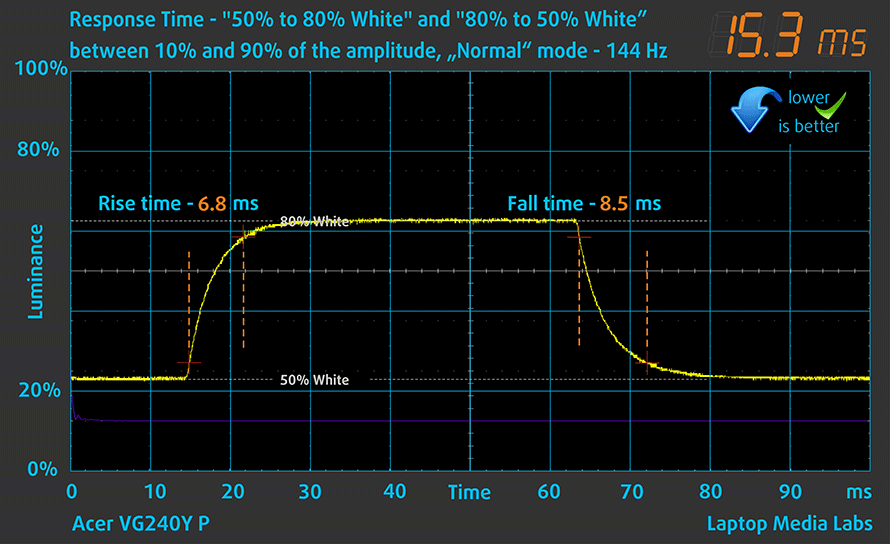
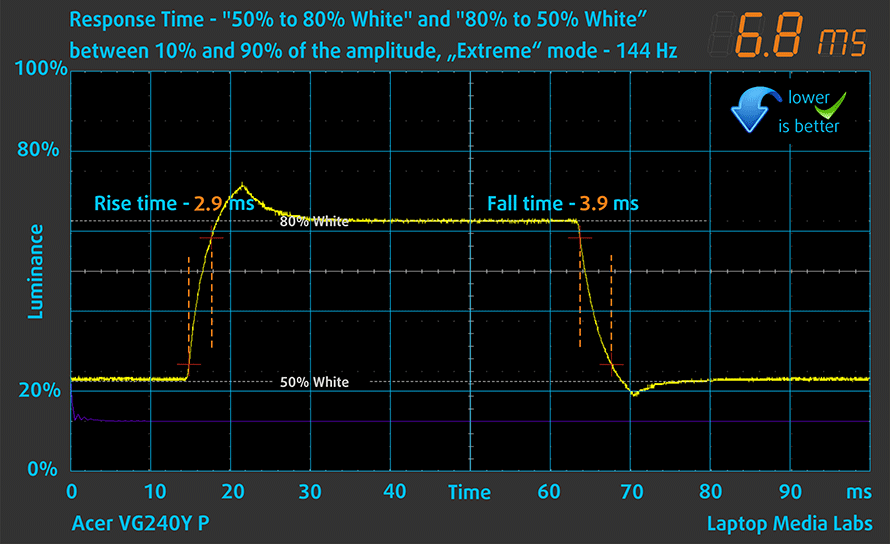









Mine thinks it has 4k capability when it does not
My panel runs in 4k what?